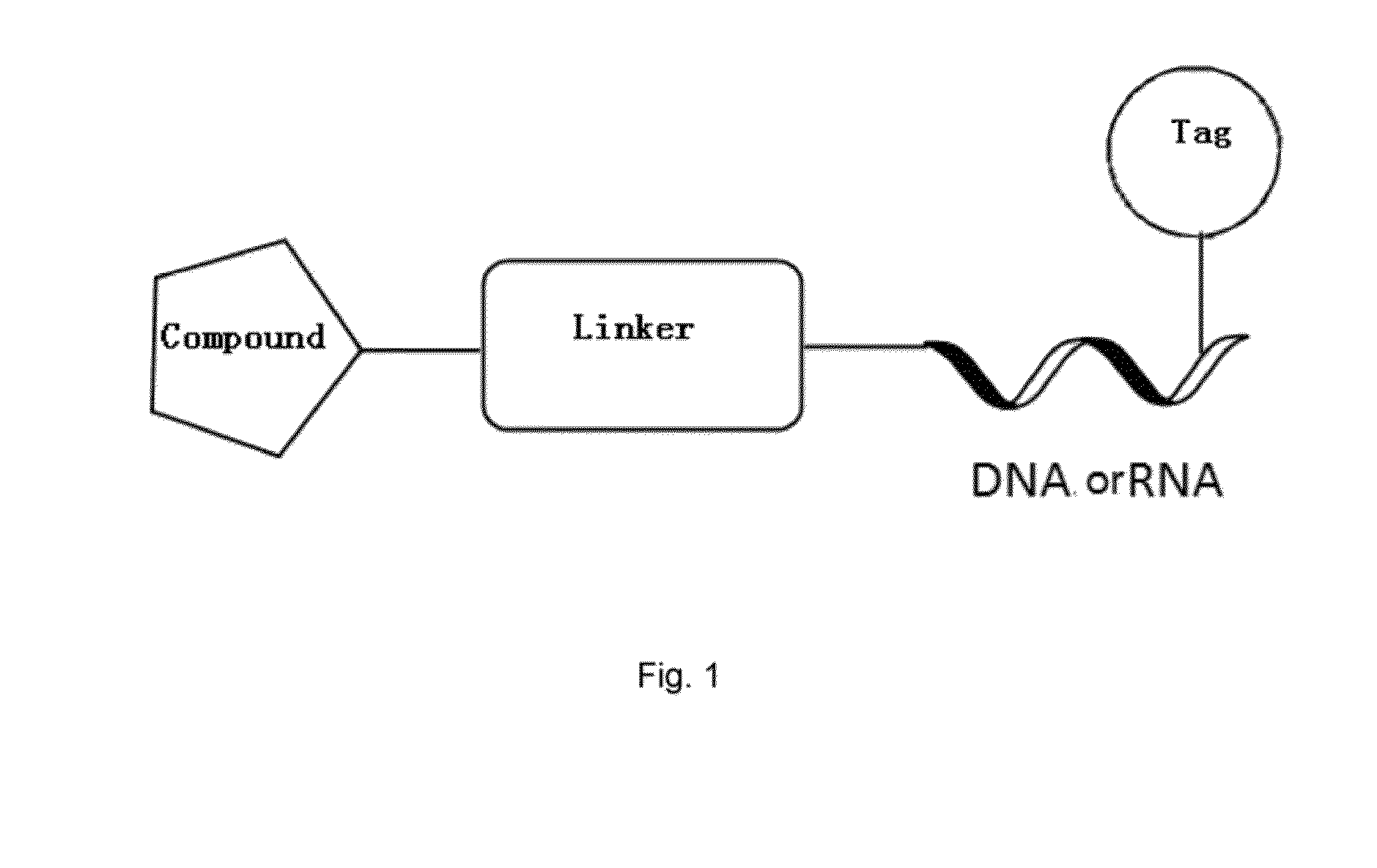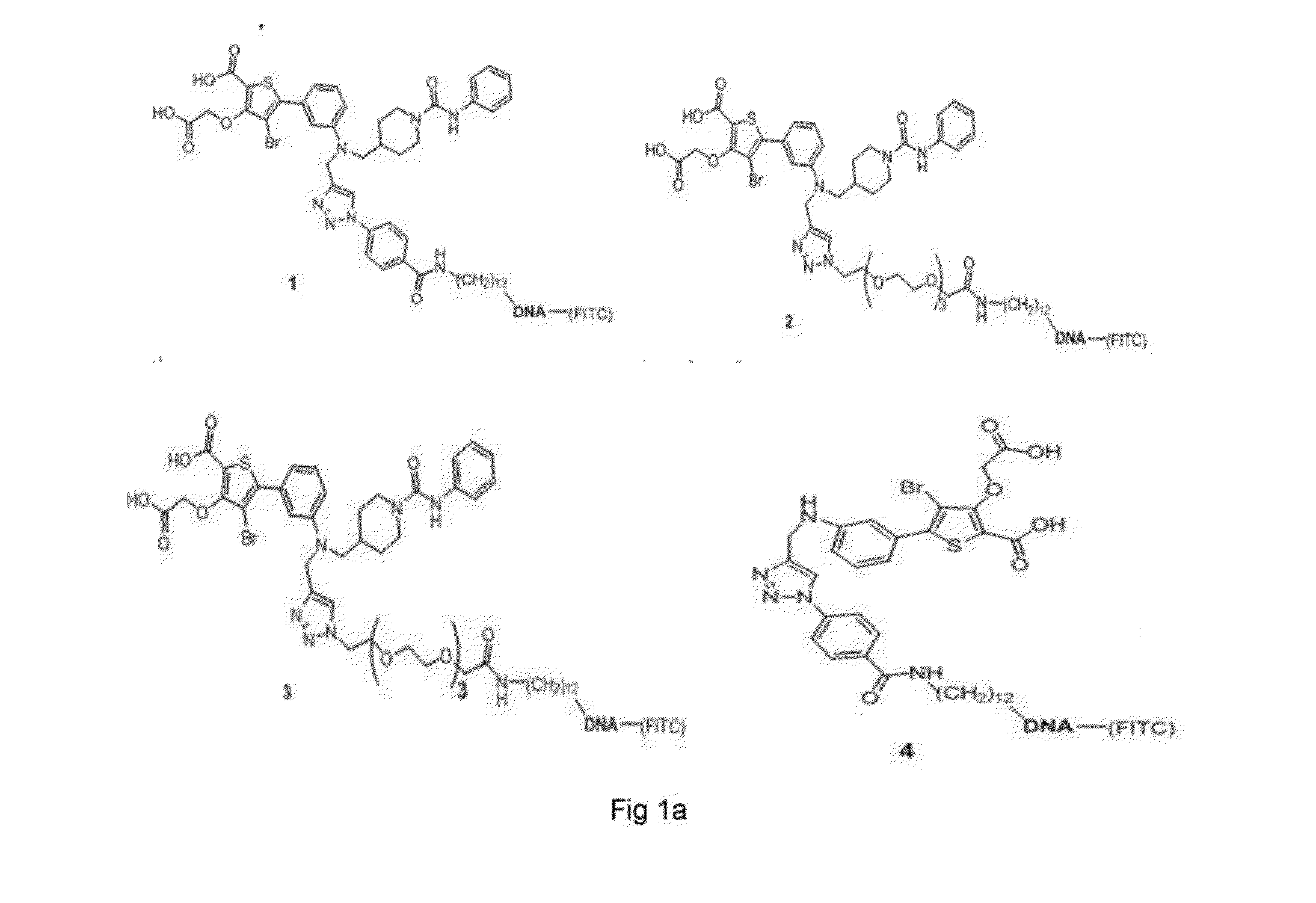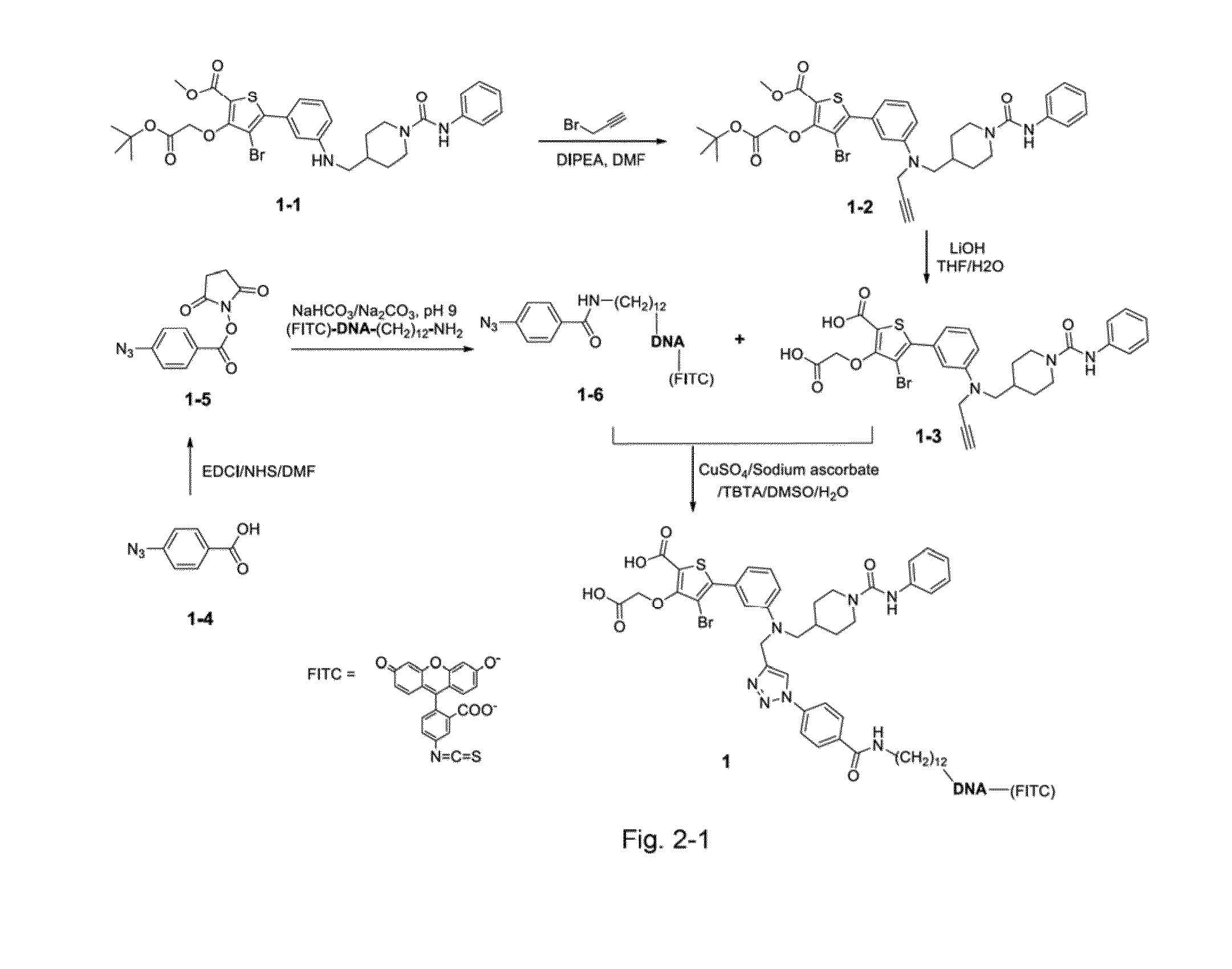Method for cell membrane permeation for compound
- Summary
- Abstract
- Description
- Claims
- Application Information
AI Technical Summary
Benefits of technology
Problems solved by technology
Method used
Image
Examples
embodiment 1
Preparation of a Molecular Conjugate for Transmembrane Transfer by the Method of the Present Invention
[0044]1. Experimental Materials and Reagents
[0045]The molecular conjugates 1 were synthesized by our company according to the method as described in the reference document (D. P. Wilson et al, J. Med. Chem. 2007, 50, 4681-4698); polyA (5′-(CH2)12-A19-3′-FITC) modified by 5′-amino and 3′-fluorescein was purchased from Invitrogen Trading Shanghai Co., Ltd; and the other reagents used for chemical synthesis were purchased from Aldrich or TCI.
[0046]2. Synthesis Method
[0047](1) Synthesis Route of the Molecular Conjugate 1 (as Shown in FIG. 2-1).
Synthesis of compound 1-2: 4-bromo-3-oxo-tert-butyl acetate-5-(3-(((1-phenyl carbamoylpiperidine)-4-methyl)-N-propargyl amine)phenyl)thiophene-2-methyl formate
[0048]4-bromo-3-oxo-tert-butyl acetate-5-(3-(((1-phenyl carbamoylpiperidine)-4-methyl)-phenyl)thiophene-2-methyl formate (compound 1-1) (250 mg, 0.4 mmol), propargyl bromide (70 mg, 0.5 mmol...
embodiment 2
[0065]Evaluation on transmembrane transfer efficiency of the single-stranded or double-stranded DNA or RNA
[0066]1. Experimental Materials and Reagents
[0067]The HepG2 cell strains were purchased from Shanghai Institutes for Bioscience Chinese Academy of Sciences; the RPMI-1640 culture medium was purchased from Hyclone Shanghai; the fetal bovine serum was purchased from Tianjin Hao Yang Biological Products Co., Ltd.; the trypsin and Opti-MEM were purchased from Invitrogen Shanghai; the X-tremeGENEsiRNA transfection reagent was purchased from Roche China; and the cell culture dishes and other consumables were all purchased from Corning China.
[0068]polyA of 5 bp: 5′-NH2—(CH2)12—PO4-A5-3′-FITC,
[0069]polyA of 19 bp: 5′-NH2—(CH2)12—PO4-A19-3′-FITC,
[0070]polyA of 38 bp: 5′-NH2—(CH2)12—PO4-A3-3′-FITC,
[0071]Single-stranded random sequence of 19 bp: 5′-NH2—(CH2)12—PO4-TGGGCTGGCCAAACTGCTG-3′-FITC, (Seq ID No. 1) and
[0072]double-stranded random sequence of 19 bp: (Seq ID No. 2 and Seq ID No. 3)
...
embodiment 3
Evaluation on Transmembrane Transfer Efficiency of Molecular Conjugates
[0080]1. Materials and Reagents
[0081]The HepG2 cell strains were purchased from Shanghai Institutes for Bioscience Chinese Academy of Sciences; the RPMI-1640 culture medium was purchased from Hyclone Shanghai; the fetal bovine serum was purchased from Tianjin Hao Yang Biological Products Co., Ltd.; the trypsin and Opti-MEM were purchased from Invitrogen Shanghai; the X-tremeGENEsiRNA transfection reagent was purchased from Roche China; and the cell culture dishes and other consumables were all purchased from Corning China. 2. Cell preparation before transfer of the molecular conjugates
[0082]24 h before transfer, the HepG2 cells in the phase of logarithmic growth were digested with trypsin; a culture medium containing 10% serum was used for adjusting the cell density to 0.5×106 cells / mL; and the cells were inoculated again in a cell culture dish of 15 cm and cultured in a culture incubator containing 5% CO2 at 37°...
PUM
| Property | Measurement | Unit |
|---|---|---|
| Mass | aaaaa | aaaaa |
| Mass | aaaaa | aaaaa |
| Length | aaaaa | aaaaa |
Abstract
Description
Claims
Application Information
 Login to View More
Login to View More - R&D
- Intellectual Property
- Life Sciences
- Materials
- Tech Scout
- Unparalleled Data Quality
- Higher Quality Content
- 60% Fewer Hallucinations
Browse by: Latest US Patents, China's latest patents, Technical Efficacy Thesaurus, Application Domain, Technology Topic, Popular Technical Reports.
© 2025 PatSnap. All rights reserved.Legal|Privacy policy|Modern Slavery Act Transparency Statement|Sitemap|About US| Contact US: help@patsnap.com



